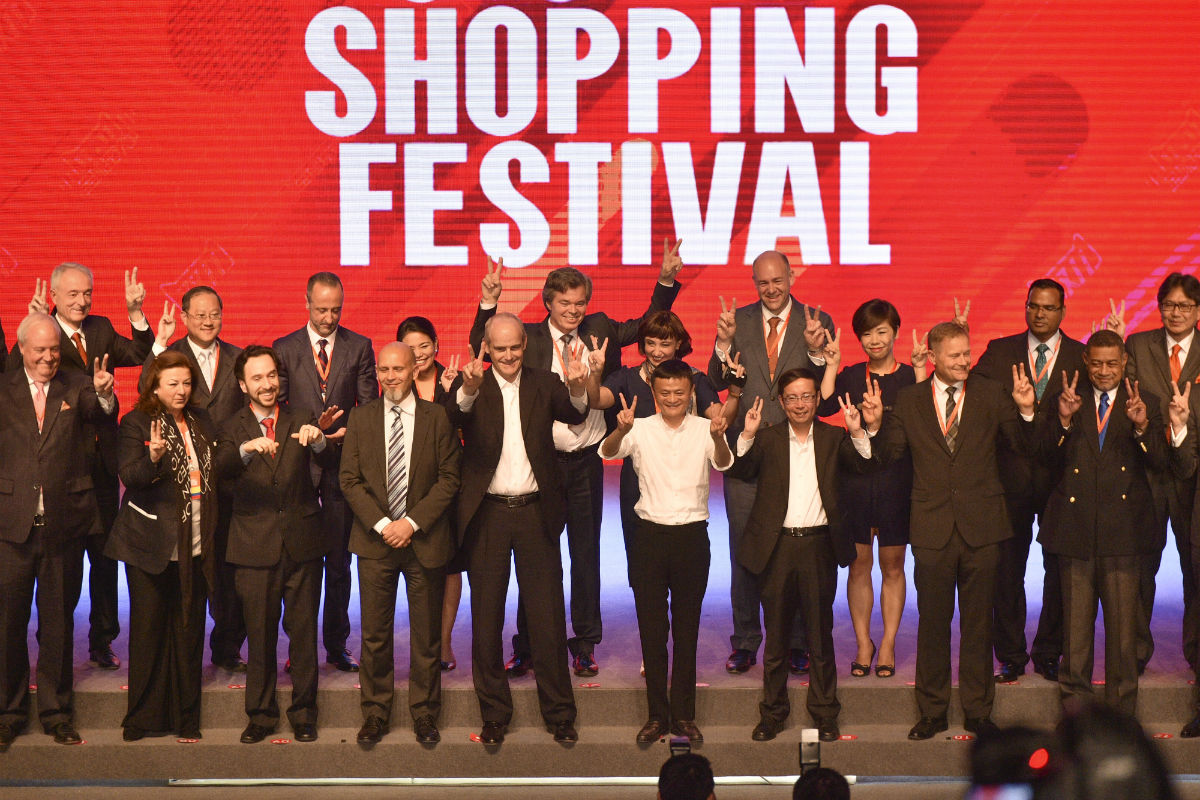[BRICS-Xiamen]Cooperation and Development of China-Russia Cross-border E-commerce

In May 2017, the BRICS E-Commerce Cooperation Experts Dialogue was held, during which an e-commerce cooperation initiative among the BRICS nations was produced. In early August, during the meeting of BRICS Trade Ministers, the cooperation initiative was approved. It intends to promote BRICS nations’ trade growth, industrial transformation, upgrade and employment and help developing countries and mid-sized and smaller enterprises become embedded in the global value chain.
Russia has endured market turbulence for the past three years. While its overall economy is stuck in a downturn, its trade with China has exhibited strong growth. China-Russia relations are presently enjoying one of their best periods of development in history. Under the cooperation framework of BRICS, the comprehensive strategic partnership between China and Russia has been deepened and strengthened. Multi-dimensional, wide-ranging and multi-level cooperation between the two countries has seen rapid progress, highlighted by the development of cross-border e-commerce. Rapid development of the logistics industry including the launch of regular postal trains between Moscow and Beijing and a regular Moscow cargo flight by Chinese delivery giant SF Express has further facilitated the rapid growth of the e-commerce industry.
Russia’s E-commerce Market is a Blue Ocean
Russia’s cross-border e-commerce market has enormous potential. According to Yandex, Russia’s most popular search engine and largest e-payment service provider, 2016 trade volume of China-Russia cross-border e-commerce exceeded US$2.5 billion, and Russia’s major cross-border e-commerce platforms are all from China. Of all foreign parcels delivered to Russia, 90 percent came from China, four percent from the EU and two percent from the U.S. In terms of capital ratio, China accounts for 52 percent, the EU for 23 percent and the U.S. for 12 percent. Each day, more than 500,000 parcels on average travel from China to Russia.
In 2016, the volume of commodities purchased by Russian netizens from China saw an increase of 78 percent and expenditures almost doubled compared to 2015. At the same time, the number of customers on China-based Russian online stores has increased by 38 percent.
However, Chinese e-commerce companies’ cultivation of the Russian market is just beginning. According to the latest statistics from the market research company eMaketer, Russia is home to 87 million internet users, the largest of any European country. And about 42 percent of all internet users regularly buy things online. While Russia’s online retail accounts for only two percent of its retail total, China and the U.S. are at about six and 10 percent, respectively. According to the Russia E-Commerce Association, the present contribution rate of the internet economy to Russia’s GDP is about 2.8 percent, and the contribution rate of markets related to the internet economy to the country’s GDP is as high as 19 percent. Still, these numbers lag far behind developed countries. Russia’s e-commerce market is just taking shape, and China-Russia cross-border e-commerce cooperation could have enormous potential.
In 2017, e-commerce cooperation between China and Russia became even more frequent. Russian Railways and China Railway Express reached a cooperation agreement to establish a cross-border e-commerce logistics platform between the two countries. Moreover, the China-Russia E-commerce Promotion Association and China’s cn.hisupplier.com signed a cooperation agreement to jointly set up a vendor hub for China-Russia trade.
Challenge vs. Opportunity
The exchange rate of the Russian ruble has been unsteady as of late. When sanctioned by Europe, future Russian customers will become even more sensitive about price and turn to online shopping — especially commodities from China. China’s cross-border online retailers should embrace more developmental opportunities.
The biggest problem hindering China-Russia cross-border e-commerce today remains customs clearance. Since Russia’s customs service allocates personnel and infrastructure based on regular flow of imports and exports, they are not fully prepared, in terms of staff, facilities, and existing processes, to deal with booms of incoming small parcels from overseas. As a result, customs clearance process bottlenecks and expansion is prevented when packages pile up at customs.
Russia is the largest country in the world, spanning nine time zones. Its logistics challenges in online shopping are more difficult than any other country. Russia’s infrastructure, logistics networks, postal service and delivery have not improved significantly in many years. The country lacks both handling ability and experience to meet the demands of an e-commerce explosion, which makes pile-ups of packages frequent. For Russian e-commerce enterprises and entrepreneurs, the crucial factor for success is smooth logistics, which significantly raises the threshold of the Russian e-commerce market.
Russia is a cash-driven economy. Generally speaking, Russians do not trust online payments. Although analysts predict usage of credit cards will rapidly increase in Russia in years to come, their penetration at present is comparatively low. Many Russian credit cards cannot even be used for online payments. And those still brave enough to engage in opening an online payment business must endure banks’ complicated security assessment process.
The common practice for Chinese cross-border e-commerce companies to solve payment problems is to partner with local Russian logistics companies. Russian logistics companies help Chinese internet retailers ship goods, collect payment and transfer money. However, this system has major problems. The entire process from a buyer placing an order to a Russian logistics company transferring payment to the Chinese company usually takes two to three months, which prolongs the process of funds withdrawal and adds operational difficulties to the China e-commerce companies. It will take time to change the situation. However, with the Russian government and Russian enterprises promoting online payments, and the industry maturing in the country, this problem will gradually be solved.
Another solution for Chinese cross-border e-commerce companies is to change their business model. They can supply goods to local e-commerce companies and shift their role from retailer to wholesaler, or shift the opposite direction and delve deeper into Russia to do business, which could foster greater opportunity.

AliExpress: Changing the Spending Habits of Russian Customers
In Russia, people on the street would probably not name Amazon as the most popular online shopping platform. Most will say “AliExpress.”
Launched in 2010, AliExpress, dubbed the international version of the popular Chinese online shopping website
Taobao.com, entered Russia in 2012. It took only five years for the online retail service to become the largest and the most visited e-commerce website in Russia. Every day, 500,000-plus parcels are shipped from China to Russia. For Russians, AliExpress is the portal to any commodity from China, from the mundane to the exotic. For example, the day after the 2016 U.S. presidential election results were announced, a Donald Trump wig could already be purchased on the website. Backed by China’s powerful manufacturing industry, no Russian online shopping websites offer cheaper commodities than AliExpress. A cotton T-shirt made in Dongguan sells for about US$1, and sometimes shipping is free.
AliExpress’s Russia team already consists of more than 70 employees working to adapt Taobao.com to Russia. More than 500 Russian enterprises now work with AliExpress. AEmall under AliExpress has become a branded e-mall providing local shipment, Russian-language customer service, and local post-sale service.
The past ten years have witnessed the mutual development of China’s logistics and e-commerce industries. A similar scenario is currently happening in Russia. Over the past three years, Russia Post’s delivery time from China dropped to as few as seven days from as many as 30.
Since February 2016, the Russian Central Bank and the Russian National System of Payment Cards, (NSPC) pilot payment cards dubbed “Mir,” can be used on AliExpress. This practice aims to attract more Russian end-users to AliExpress. And the two sides signed a memorandum of understanding in March of last year.
Russian media has compared what AliExpress has done with what Coca Cola achieved in the 1990s — but in an Asian way. In a sense, AliExpress’ development in Russia embodies the website and even Alibaba Group’s international expansions ambitions. At the same time, AliExpress is promoting Russia’s transformations in logistics and banking and changing the psychographics of Russian customers.
E-commerce Regulations among BRICS Nations
From January to June, 2017, bilateral trade volume between China and Russia reached nearly US$40 billion, an increase of nearly 26 percent on the same period last year. Bilateral trade volume for the year is expected to top US$80 billion. China has been Russia’s largest trade partner for six consecutive years. China-Russia cross-border e-commerce has exhibited a good development trend in recent years, and is becoming a new trade pattern. Thus, promoting e-commerce cooperation has become a major part of bilateral economic and trade cooperation. During the Fourth China-Russia Expo in June 2017, the countries held an e-commerce cooperation conference themed around the idea that “cross-border e-commerce promotes the innovation and development of China-Russia economic and trade cooperation.” The conference strengthened communication and cooperation between e-commerce companies from both sides and set a foundation for promoting innovation and development of China-Russia economic and trade cooperation.
Today, the world urgently needs trade rules adapted to the internet era. In the traditional global trade structure, 20 percent of transnational corporations hold dominant positions in the international economic area. However, with the deepening globalization process, small and mid-sized enterprises as well as individuals are replacing transnational corporations to play a more central role in world trade. Strengthening institutionalized cooperation between small and mid-sized enterprises from BRICS nations is a prerequisite for a stronger voice in the market. According to Russia’s first deputy economic development minister Alexei Likhachev, statistics from the United Nations Conference on Trade and Development show that by 2018, 40 percent of e-commerce’s “business to consumer” service will be happening in developing countries and countries in transition, and the share for developed countries will drop to 60 percent. BRICS nations could standardize e-commerce protocols for international trade organizations. BRICS nations are now working on the possibility of cooperation and will release uniform e-commerce rules for its member countries.
Author Мария is a manager with Yandex’s department of resource optimization. Author Li Min is a senior advertising executive with Yandex’s China branch.